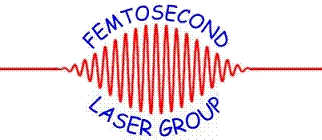Department of Physics and Astronomy: Publications and Other Research

C.J.G.J. Uiterwaal Publications
Document Type
Article
Date of this Version
November 1998
Abstract
Singly and multiply charged ion yield curves are reported for resonant and nonresonant two photon- ionization processes for a collection of 31 metal atoms. The atoms are created by sputtering from a solid target using an Ar-ion gun. Single and multiple ionization of these atoms is performed using linearly polarized 248.6-nm (KrF) laser pulses with a full width at half maximum duration of 500 fs, employing intensities between 109 and 1012 W cm-2. A four-grid high-resolution reflecting time-of-flight spectrometer is used for ion detection. This advanced spectrometer has a well-defined and small source volume, enabling absolute measurements of ionization probabilities and saturation intensities. Because our measurements are not affected by the increase of the interaction volume for increasing intensities, we can discriminate between resonant and nonresonant multiphoton ionization processes without varying the laser pulse duration. For many metals, the intensity dependence of the ion yield can be accurately reproduced by rate calculations based on a resonantly enhanced two-photon-ionization scheme. As a result, we can determine absolute values of the one-photon cross sections in the resonant processes and these are compared to theoretical values we calculated. For the nonresonant processes, we give generalized multiphoton-ionization cross sections and compare these to a scaling law of Lambropoulos [J. Opt. Soc. Am. B 4, 821 (1987)].


Comments
Published by American Physical Society. Phys. Rev. A 58, 3836 - 3848 (1998). http://link.aps.org/abstract/PRA/v58/p3836. Copyright © 1998 American Physical Society. Permission to use.